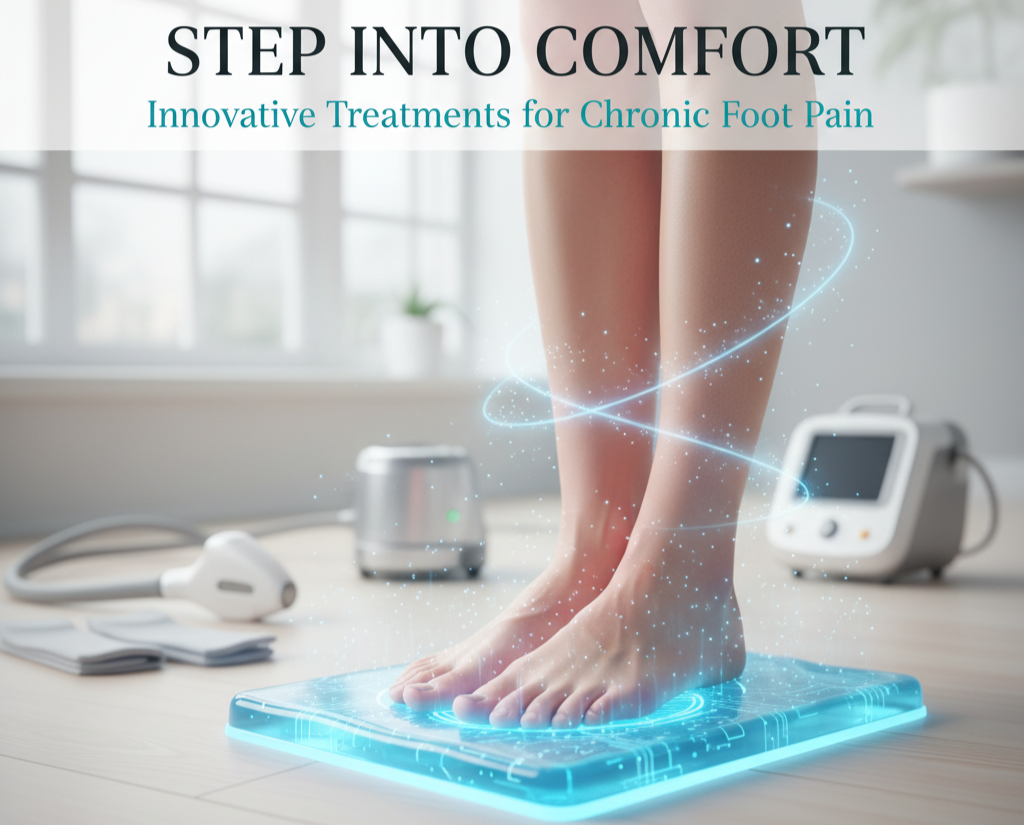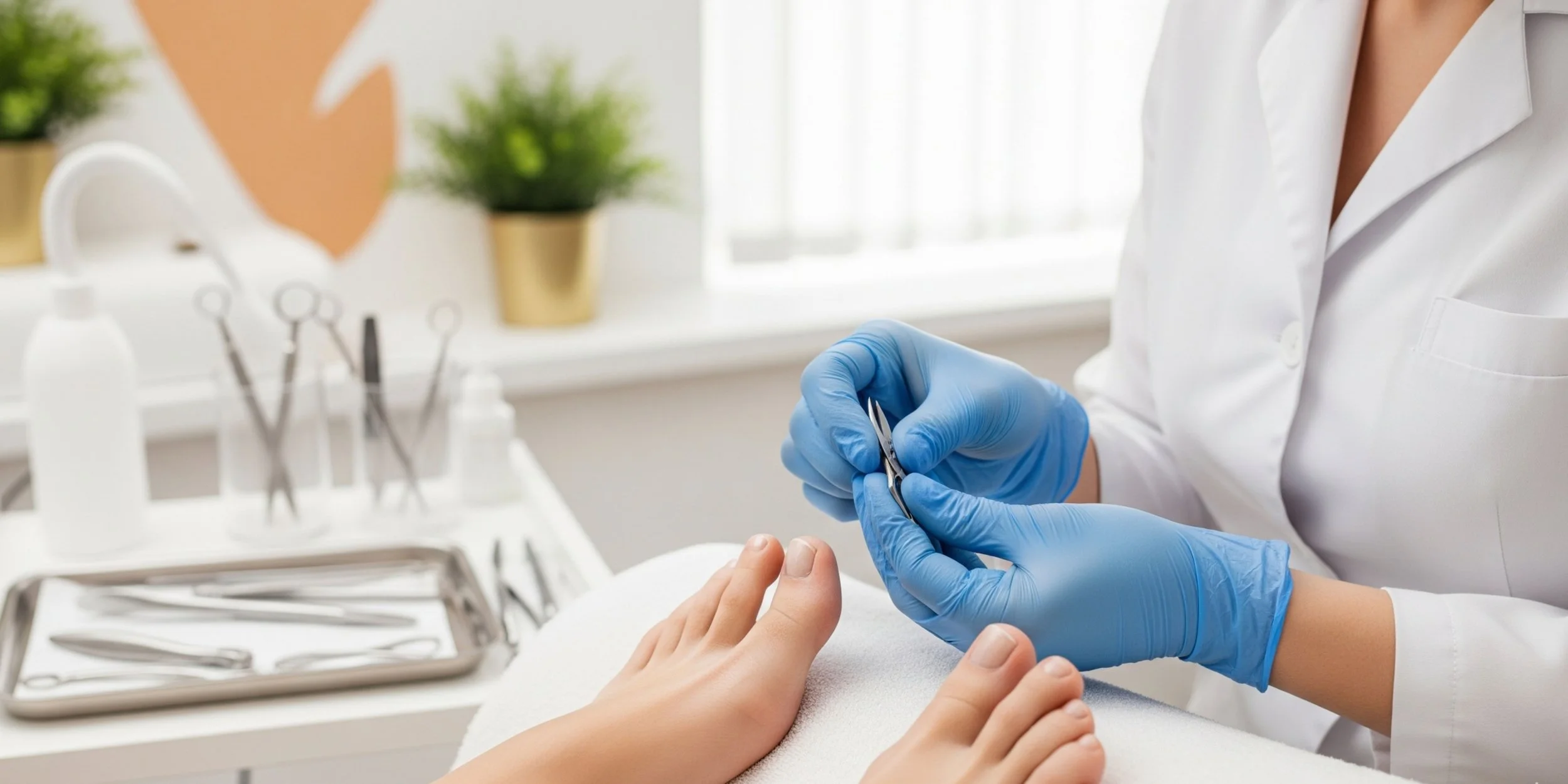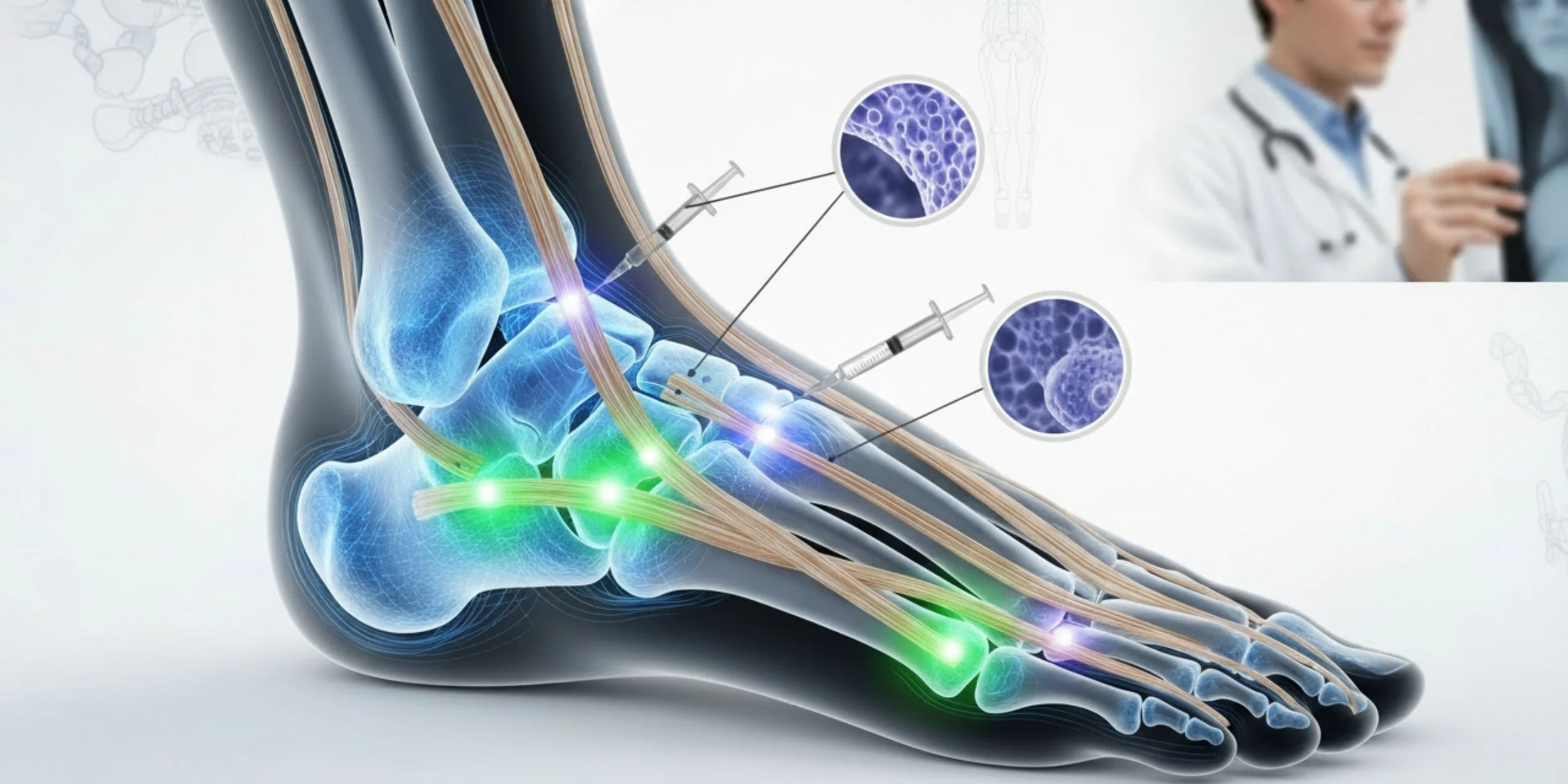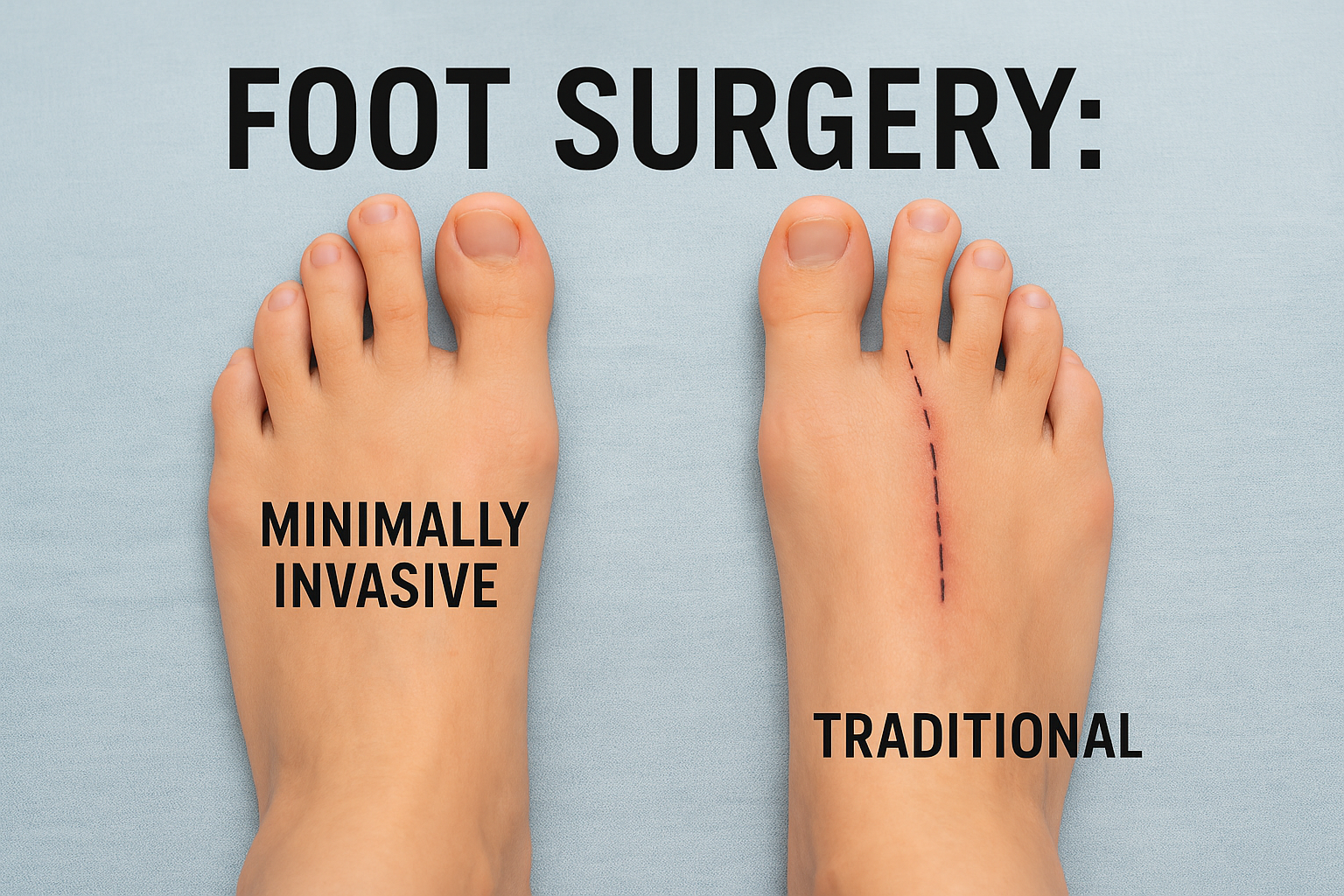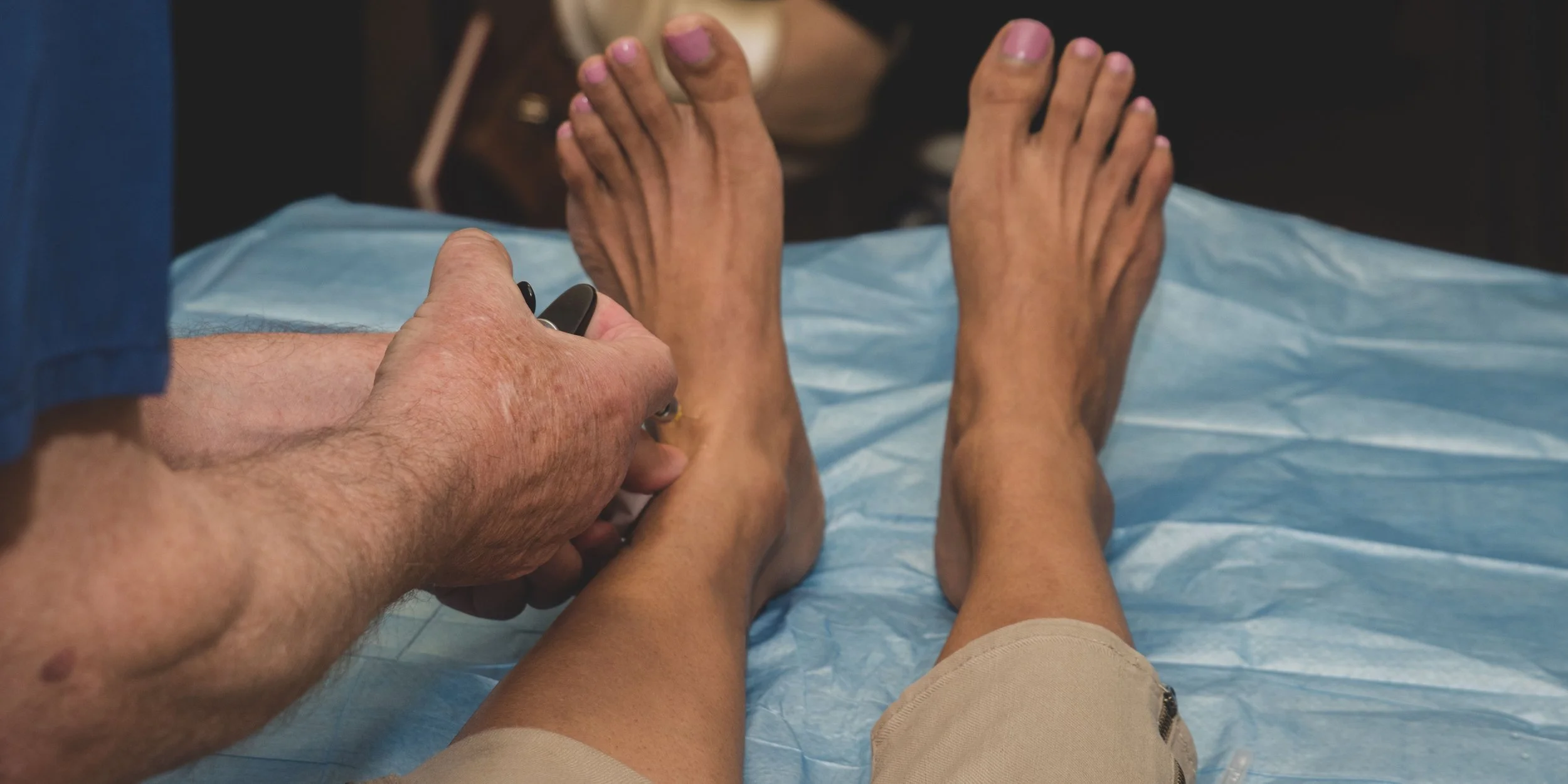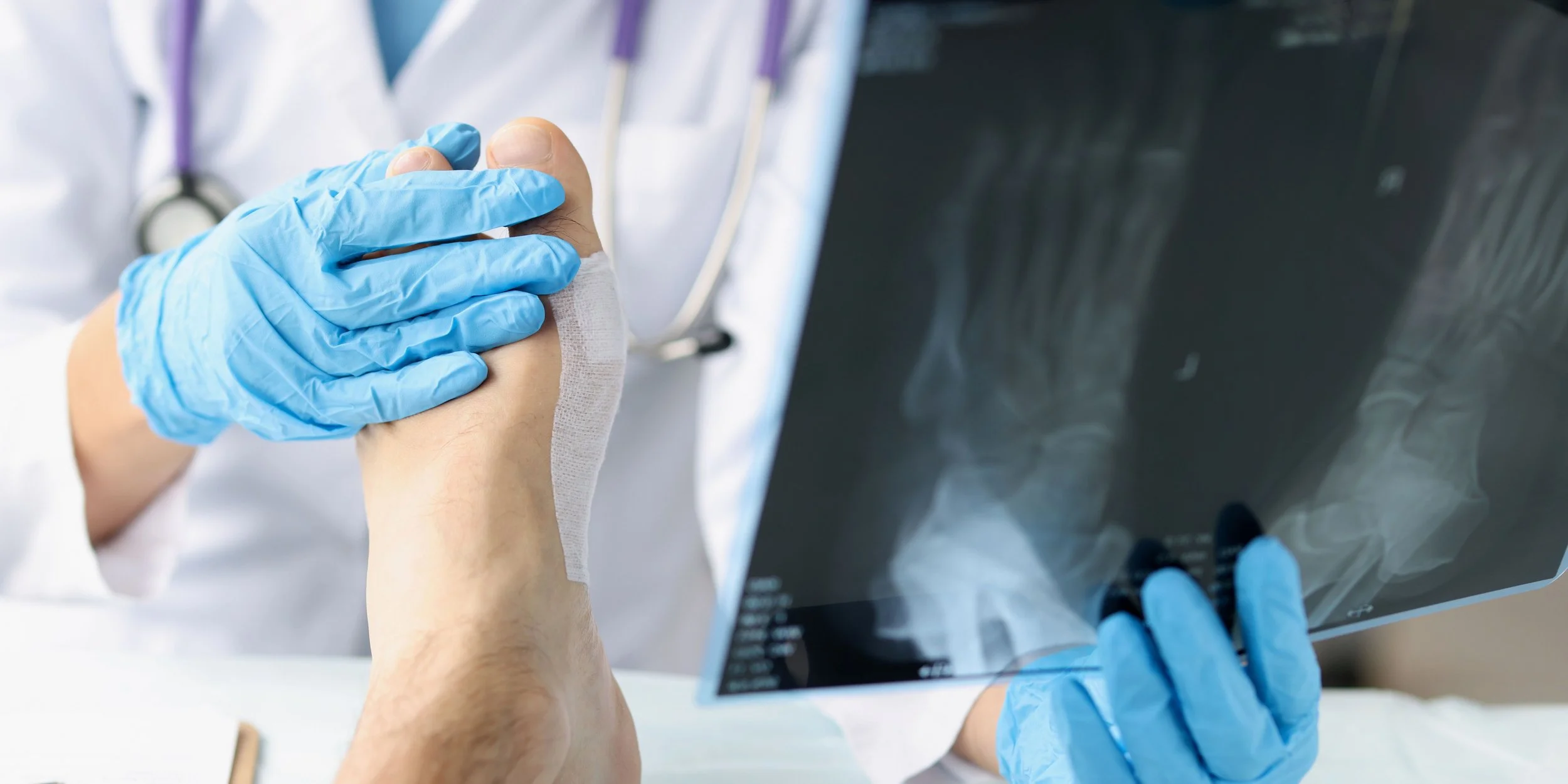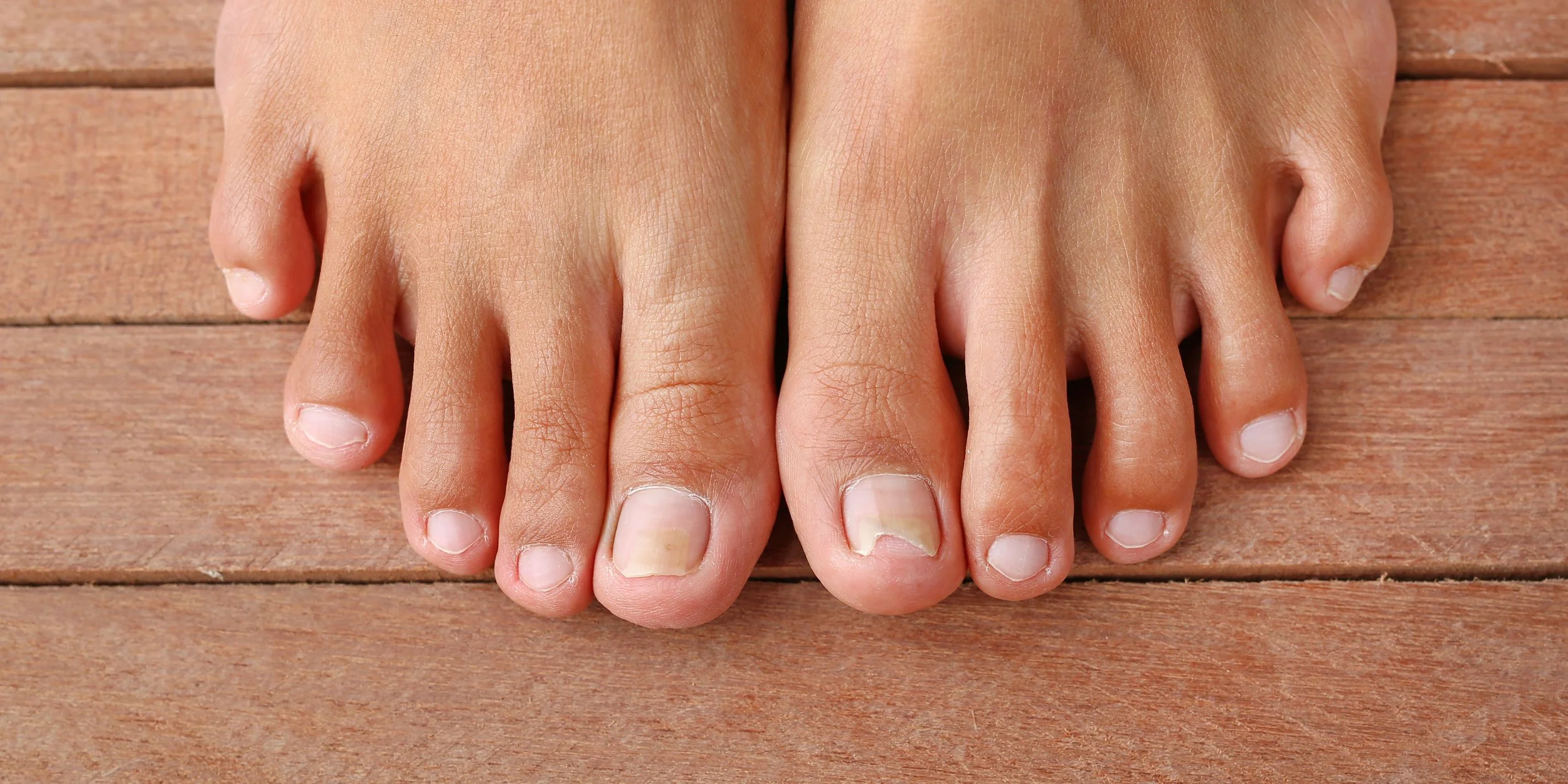Step Into Comfort: Innovative Treatments for Chronic Foot Pain
Chronic foot pain is more than a daily inconvenience—it can limit your mobility, affect your posture, and reduce your overall quality of life. At Pacific Point Podiatry, we specialize in identifying the root cause of foot and ankle pain and providing innovative, minimally invasive treatments designed to promote healing from the inside out. From laser therapy and shockwave treatment to custom orthotics and lifestyle guidance, our goal is to help you step confidently toward lasting comfort.
Understanding Chronic Foot Pain
Your feet are intricate structures made up of 26 bones, 33 joints, and over a hundred muscles, tendons, and ligaments. They absorb shock, support body weight, and keep you balanced through every movement. Because of this constant demand, even minor imbalances or injuries can develop into chronic pain if not properly addressed.
Chronic foot pain is defined as persistent discomfort lasting longer than three months. Unlike acute pain, which typically follows an injury and improves as the tissue heals, chronic pain may linger due to ongoing inflammation, nerve involvement, or repetitive strain. It can affect any part of the foot — from the heel and arch to the ball of the foot and toes — and often influences gait and posture over time.
For many individuals, chronic pain develops gradually, beginning as a dull ache or morning stiffness that worsens with activity. Identifying its source early is key to preventing progression and achieving lasting relief.
Common Causes of Chronic Foot Pain
Chronic foot pain has multiple potential causes. Understanding them helps guide treatment and recovery.
1. Plantar Fasciitis
One of the most frequent sources of heel pain, plantar fasciitis occurs when the thick band of tissue (plantar fascia) running across the bottom of your foot becomes irritated or inflamed. It’s often caused by overuse, poor shoe support, or tight calf muscles. Patients typically report stabbing pain upon their first steps in the morning.
2. Achilles Tendinitis
Repetitive strain on the Achilles tendon—the structure connecting your calf muscles to your heel bone—can cause microscopic tears and inflammation. Without proper care, it can progress to chronic degeneration (tendinosis) and persistent heel or ankle pain.
3. Peripheral Neuropathy
Nerve damage, often related to diabetes or mechanical compression, can lead to burning, tingling, or numbness in the feet. Chronic neuropathic pain may also cause balance issues and increase the risk of injury.
4. Arthritis
Osteoarthritis and rheumatoid arthritis can affect the joints of the foot and ankle, causing stiffness, swelling, and deformity. The pain may worsen after prolonged activity or at the end of the day.
5. Structural Imbalances
Flat feet, high arches, and other biomechanical abnormalities can alter weight distribution across the foot. Over time, this can lead to strain on muscles and ligaments, resulting in pain and fatigue.
6. Poor Footwear Choices
Shoes that are too tight, narrow, or lacking in arch support can cause calluses, blisters, and misalignment issues. Over time, improper footwear contributes significantly to chronic pain conditions such as bunions, neuromas, and plantar fasciitis.
The Importance of Early Diagnosis
Early diagnosis is crucial in preventing minor issues from becoming chronic. When foot pain is ignored or masked with temporary fixes, it can lead to compensatory changes in gait and posture, further affecting the knees, hips, and spine.
At Pacific Point Podiatry, we begin each evaluation with a comprehensive biomechanical assessment, which may include:
Gait analysis to assess walking patterns
Palpation and range-of-motion testing to identify tightness or weakness
Ultrasound or imaging to visualize tissue inflammation or bone abnormalities
Neurological testing for nerve involvement
Identifying the exact source of pain allows us to develop a personalized treatment plan that targets both symptom relief and long-term correction. In many cases, early intervention can prevent the need for surgery altogether.
Innovative Treatment Options
Regenerative Medicine
Includes platelet-rich plasma (PRP) and stem cell therapy
Uses the body’s natural healing mechanisms to repair tissue and reduce inflammation
Provides longer-lasting relief compared to traditional pain medications or injections
Shockwave Therapy (ESWT)
Non-invasive treatment using acoustic sound waves to stimulate healing
Proven effective for plantar fasciitis, Achilles tendinopathy, and chronic heel pain
Promotes blood flow, cellular repair, and pain reduction without downtime
Excellent option for patients seeking non-surgical foot pain treatment in Santa Cruz
Laser Therapy (LLLT)
Uses specific wavelengths of light to reach deep tissues and reduce inflammation
Encourages cell regeneration and natural pain relief
Helpful for neuropathy, arthritis, and soft tissue injuries
Safe, painless, and non-invasive option provided by a laser therapy podiatrist in Santa Cruz
Combined Approach for Best Outcomes
These therapies can be customized and combined for faster healing and long-term comfort
Ideal for patients wanting advanced, minimally invasive treatments for chronic foot pain
Physical Therapy and Rehabilitation Techniques
Treatment doesn’t end in the clinic—it extends to how you move every day. Physical therapy plays a vital role in restoring function, flexibility, and strength.
Key components of rehabilitation include:
Stretching: Especially for the plantar fascia and Achilles tendon to reduce tension
Strengthening exercises: For intrinsic foot muscles and stabilizers of the ankle
Balance and proprioception training: To restore neuromuscular control
Manual therapy and massage: To improve mobility and reduce adhesions
Through our Direct Care approach, patients receive consistent follow-up and education to ensure each therapy phase supports long-term recovery.
The Role of Orthotics in Foot Pain Relief
Orthotics are a cornerstone of biomechanical correction. At Pacific Point Podiatry, custom orthotics are precisely designed to match your foot’s contour and movement pattern.
Unlike store-bought inserts, custom orthotics address structural issues at the source—supporting proper alignment and reducing abnormal strain on muscles and joints.
Conditions that benefit from orthotics include:
Flat feet or overpronation
High arches
Metatarsalgia
Bunions and hammertoes
Heel and arch pain
Orthotics can also improve knee, hip, and lower back alignment by promoting balanced weight distribution.
Our process includes digital foot scanning and gait analysis to ensure a precise fit, followed by education on proper shoe pairing and break-in protocols.
Lifestyle Changes for Managing Foot Pain
Pain relief isn’t just about clinical treatments—it’s also about everyday habits that support healthy feet.
1. Maintain a Healthy Weight
Excess weight increases pressure on the feet, particularly the arches and heels. A balanced diet and regular physical activity help reduce strain and inflammation.
2. Choose Proper Footwear
Footwear plays a defining role in both prevention and recovery. Choose shoes with:
Adequate arch and heel support
Wide toe boxes to prevent crowding
Shock-absorbing midsoles
Replace worn-out shoes every 300–500 miles (for runners)
Pro Tip: Shop for shoes in the afternoon when your feet are slightly swollen, ensuring a proper fit throughout the day.
3. Incorporate Daily Foot Care
Simple habits—such as gentle stretching in the morning, moisturizing to prevent cracking, and regular self-inspection—go a long way in maintaining foot health.
Exploring Alternative Therapies
Acupuncture
Ancient Chinese therapy using fine needles at specific body points to relieve pain
Stimulates the body’s natural endorphin release and enhances blood circulation
Research shows it can effectively reduce chronic foot pain and inflammation
Often used as a complementary option alongside modern podiatric treatments
Chiropractic Care
Focuses on realigning the spine and musculoskeletal system to improve posture and movement
Helps correct body imbalances that may place excess stress on the feet
Can improve nerve function, joint mobility, and overall biomechanics
Works best when coordinated with a podiatrist’s evaluation and orthotic support
Massage Therapy & Reflexology
Uses targeted pressure and deep-tissue techniques to relieve tension and enhance blood flow
Supports muscle recovery, reduces stiffness, and improves mobility
Reflexology, in particular, targets pressure points linked to internal organs and nerve pathways
Encourages relaxation and can complement ongoing foot pain treatment in Santa Cruz
Holistic Integration
Combining alternative therapies with clinical care and custom orthotics can offer a well-rounded pain management strategy
Ideal for patients who prefer non-surgical, whole-body approaches to healing and comfort
When to Consider Surgical Options
Despite advances in conservative care, some patients may require surgical intervention—especially in cases of structural deformity or chronic tendon rupture.
Indications for surgery include:
Severe bunions or hammertoes causing joint misalignment
Chronic heel pain unresponsive to non-invasive treatments
Persistent neuromas or tendon tears
At Pacific Point Podiatry, surgical options are always considered a last resort. When necessary, we use minimally invasive techniques designed to reduce tissue trauma, minimize scarring, and shorten recovery times. Post-surgical rehabilitation focuses on restoring strength and function, ensuring long-term results.
Conclusion and Next Steps for Pain Relief
Chronic foot pain doesn’t have to limit your movement or dictate your lifestyle. With today’s advanced, evidence-based treatments—from laser and shockwave therapy to custom orthotics and rehabilitation—lasting relief is possible without the need for surgery.
At Pacific Point Podiatry, our Direct Care model ensures accessible, transparent, and personalized care for every patient. We take the time to understand your symptoms, evaluate your biomechanics, and develop a tailored treatment plan that supports both comfort and mobility.
If you’ve been struggling with persistent heel, arch, or foot pain, now is the time to take the next step toward better health.





